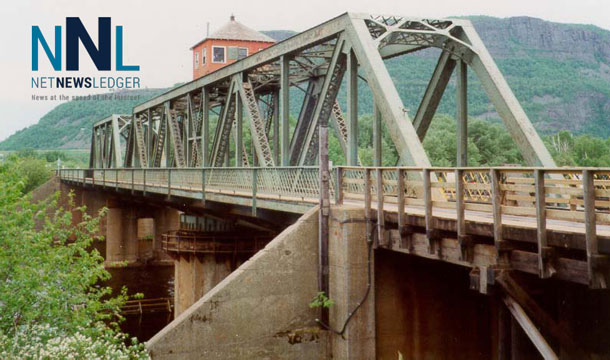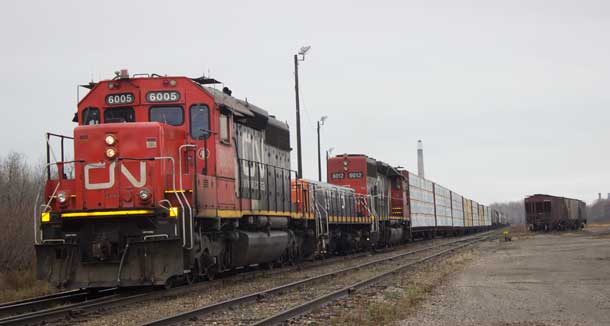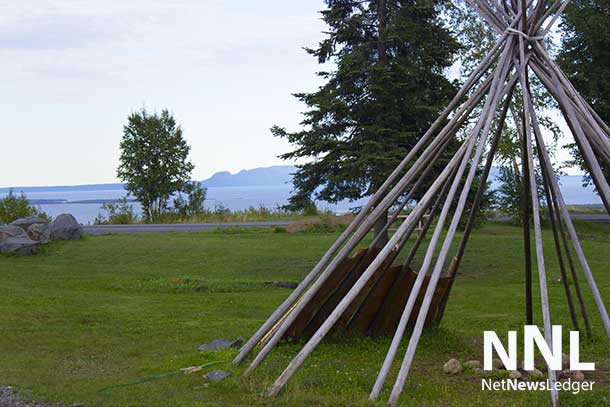
CN Seeks Thunder Bay to Put Up Money for Bridge
THUNDER BAY – CN has sent a letter to Thunder Bay Mayor Keith Hobbs. In that letter, the company states that it would like to see the City of Thunder Bay put in funds that would help to repair the James Street Bridge.
The company is seeking that its original agreement to maintain the bridge in effect be cancelled because the bridge has exceeded its useful life.
The text of the original agreement reads: “The Company will maintain the bridge in perpetuity without cost to the Town except the cost and maintenance of streetcar rail sand trolley wires which will be furnished by the Town or Electric Railway Company using the bridge; and that the space allowed for Town traffic on each side of the bridge, be sufficient to accommodate streetcar vehicular traffic and separate passage for foot passengers.”
This is likely a case where the company has difficulty living up to the agreement that it in effect took over once CN took over Grand Trunk Railway.
CN made a profit last year of $2,600,000,000 in fiscal 2014.
CN is seeking a reported $1.5 million from Thunder Bay in order to allow for repairs to the bridge to allow vehicles to travel over the centre part of the bridge. This would be a short-term solution.
Text of CN’s Letter
We have now had a chance to consider the position of the Fort William First Nation regarding CN’s title to its right-of-way over road allowances. Our response will be communicated to FWFN this day. We are hopeful this will allow us to resume negotiations.
The City has elected to advocate this issue in the media. We do not believe this is an effective way to find an expedient resolution to this issue; but then again neither are the threats made by the City at each meeting to attack CN’s reputation if it did not obtain satisfaction.
The City’s description of the issue ignores basic facts and suggests the condition of the James Street Bridge is the result of CN’s failure to maintain the Bridge. The City has no evidence to support that claim. The Bridge was originally designed with a useful life of 75 years. It has outlived that useful life by more than 30 years, something that could never have been achieved without proper maintenance.
The City continues to suggest that the fact the railway bridge continues to be used is evidence the vehicular roadway is equally sound. This is not accurate.
The City knows, and its engineers have recognized during our meetings, that the roadway structure is, for all intents and purposes, a separate structure than the railway structure. The independent engineers commissioned by CM have confirmed the roadway structure poses a serious safety risk and the only way to prevent potentially fatal incidents is to close the bridge to vehicular traffic. CN has followed the engineers’ recommendation. Doing anything else would be completely irresponsible.
CN has conveyed its position to the City with respect to the 1906 Agreement.
The 1906 Agreement provides for the maintenance of the James Street Bridge, not its replacement. The expression “in perpetuity” has to be read in that context. In an effort to resolve this issue and avoid protracted and costly litigation, CN has made an offer to the City: CN offered to share its rail deck with vehicular traffic until a longer-term solution could be developed. CN offered to contribute 50% to the cost of that short-term solution, up to a maximum amount of in consideration for an acknowledgement that CN had discharged its obligation under the 1906 Agreement. We explained that CN cannot make a significant contribution towards the cost of the short-term solution only to get sued by the City over the 1906 Agreement.
Recognizing that the City has a different position over the 1906 Agreement, CN offered the alternative to the City of paying 100% of the short-term solution and litigate over the 1906 Agreement, seeking in that context recovery of its contribution to the short-term solution. While CN does not believe the City is
entitled to either, the City appears to believe othenrwise. If the City is confident in its position, they should be comfortable with that option.
The City countered by offering to contribute to the roadway improvements (costs it would, in any event, be responsible for) and reserving its rights under the 1906 Agreement. This counter-offer ignores all of the fundamentals of CN’s offer.
Notwithstanding the foregoing, CN has done further work in the last few weeks and would be prepared to offer another alternative to the City: to share its rail deck with vehicular traffic for as long as the railwav bridqe can safelv accommodate such traffic. CN reiterates its offer to financially contribute to
this solution. CN would propose to replace the 1906 Agreement by a new agreement evidencing this arrangement.
We believe this proposition represents a non-costly, expedient and effective option. Our team would be prepared to start the work within days of an agreement and we estimate the work could be completed and the bridge reopened within weeks. This option would save the millions of dollars and years it would take to build a new bridge. While vehicular traffic would have to yield to rail traffic, the impact should be limited given the rail volumes and, if those volumes were to increase, the other access alternative would remain available to alleviate congestion, if and when it occurred.
In view of the claims asserted by FWFN, CN would also be looking for assurances that its title and its right to operate would not be challenged going forward.
We believe this offer is a reasonable way to avoid litigation. That being said, should the City feel differently, it has the option to litigate. Should it decide to do so, however, CN’s offer to contribute to the short-term option would be rescinded and, should CN’s position prevail ultimately, its offer to attach a new roadway structure to the existing rail bridge would equally be rescinded.
We understand the City council convenes on the 21st. As such, our final offer is opened for acceptance until 17h00 EST on the 22nd.













